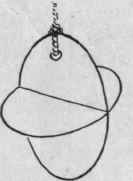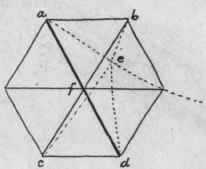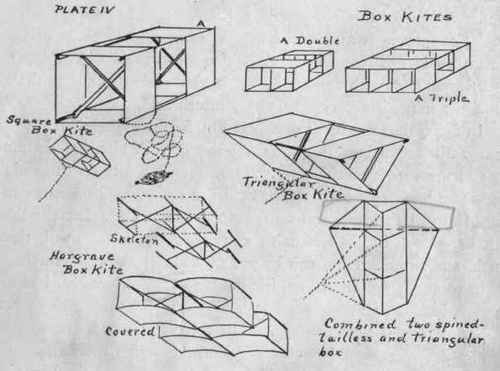2. Tailless Kites
Description
This section is from the book "The Construction And Flying Of Kites", by Charles M. Miller. Also available from Amazon: The construction and flying of kites.
2. Tailless Kites
Tailless Kites Are Most Popular With The Boys Nowadays
They cannot fasten the pieces together and attach bridles carelessly with hope for success, but each operation must be carefully measured and worked. The tailless is a very easy flyer and works well in tandem, or may be compounded. The bridle is sometimes attached to the two ends of the spine; sometimes the upper end is attached where the bow and spine are lashed together, but should be made long enough to reach from the top to the end of the bow, and from that to the bottom. In Fig. 1, Plate I, fag is the length of the bridle. The anchor line is attached to the point that just reaches the end of the bow.
Fig. 2, Plate I, is a compound kite of two tailless. It has one long spine and two bows. The bridle will be attached at the crossing of the upper bow and bottom of the spine.

Fig. H.

Fig. I.


Fig. 3, Plate I, makes a beautiful kite and flies well. The curves g c b and h d b are made of split bamboo and are fastened before a k g and a m h are put on, but when the latter are attached, the strings at m and k draw them down into the upper curves.
Fig. 4, Plate I, with one spine and two bows, is one of the strong pulling tailless kites. The tailless kites as a rule are not strong pullers. The lower bow of this kite should not be bent quite as much as the upper. The spacing is as essential in this, as in Fig. 1. The bridle may be attached in different ways. A loop from one end of the upper bow to the lower end, with another string from its exact center to the lower end of the spine, is a very satisfactory attachment.
In flying the tandem, as shown in Fig. 5 of the same plate, the drawing says 30 feet or more for the extra line of each kite, but an hundred feet and upward is much better. First put up a kite on the main line some three hundred or more feet, then put up a No. 2 on an extra line about 100 feet or more, and tie this to the main line. Let the line out until the second is 300 feet or so away, and attach the third, then the fourth, and so on. Kites can be put up to a great height in this way, for the second, third and so on, lift the string and allow No. 1 to mount higher, which it will do as soon as it is relieved of the load of string.
Plate II is self-explanatory. The three to the left are small boys' modification, and should have a very loose covering. The middle one on the left-hand gave some trouble one day, so an extra keel was added that gave poise and made a strong puller of it. The illustration is given a little to the right.
A small boy came to me one day with a broken heart, and it was all because another boy had broken the bow of his kite. A few encouraging words soon brought back the smile, and a little manipulation brought out as good a sailing kite as there was in the neighborhood. The result is shown in the upper corner. The bow was broken in the middle, so an extra stick was lashed to the back, as shown, leaving the spine well raised.
The large compound kite has no very great advantage over other forms, but is an interesting experiment.
Continue to:


